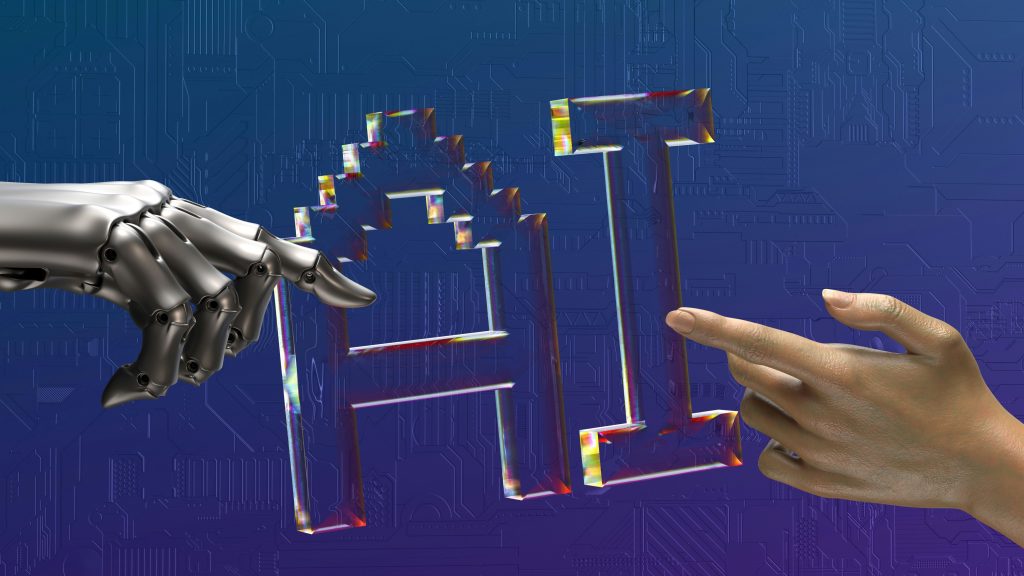The buzz around AI over the last year has been intense with many areas of advertising (and most of the planet..!) feeling like a whole new world of opportunity has been opened up.
However, when it comes to PPC, the reality is that AI has been a part of everything we’ve done for years and that the latest advancements should be treated as opportunities for evolution rather than a need for absolute revolution.

Nearly a decade ago PPC was built on manual optimisations. The focus was always on maximising control – adjust every single bid using manual CPC, focus on Exact keyword only, avoid Broad, use single keyword ad groups (SKAG), make hundreds of unique ad copy, create unique landing pages for keywords, single product shopping grouping – the list goes on, but the rule of thumb was that the more granular your account was the better your results would be.
However, although this level of granularity gave you control, and was undoubtedly the best way to deliver results at the time, the approach had four major weaknesses:
1. It took an ungodly amount of time to update the entire account (…and where Google Ads Editor would break more often than not)
2. The setup wasn’t able to react to real world changes
3. The scale ended up being very difficult to effectively manage
4. Human error / mistakes were easy and could sit unnoticed for a long time
These four problem areas can be summed up as: slow, rigid, difficult and unreliable. Those were considered unavoidable ways of life when it came to optimising an account and this is exactly why AI began to wriggle its way in.
Every action that has been taken by companies in the PPC space over the last 10 years has been to improve or remedy these four areas. They know that if the Google Ads experience is fast, responsive, easy and reliable then more people will spend more time spending more money. This sounds like it should be a bad thing, but the reality is that with these improvements then people are happy to spend more because the platform is capable of delivering increased results in line with the increased investment. It’s a win-win.
Fast forward to today and almost all aspects of this granular approach have now gone. Manual bidding, static ads, single keyword ad groups and standard shopping have (in the most part…) been consigned to the history books and in their place has come Smart Bidding, Broad, RSA, Demand Gen, PMax and many, many more.
All of these ‘new’ features have been introduced over the last few years and have gradually phased out their manual predecessors one by one. This has meant that our familiarity and comfort with the machine has subconsciously been built up to the extent that our trust in AI and attitude towards working with it to maximise results is now second nature.

Photo by Igor Omilaev on Unsplash
How does this apply to today?
When it comes to creating, managing and optimising a modern day PPC account then the key is to forget granular control and fully embrace the AI tools available to you. This means setting the entire account up with AI front and centre. The reason for this is that the AI tools are now so much more powerful than anything we can do manually that anything less than a complete embrace will see you get very quickly left behind.
In order to not get left behind then you need to lean into two things in particular: data and flexibility.
Data is the lifeblood of AI and informs every action and reaction (and subsequent reaction forever more…) and consequently you need the data to not only be as good as possible, but also as plentiful as possible. Good data = good AI = good results.
The trickle down effect of this when it comes to campaigns is that less is more: fewer campaigns, fewer ad groups, broader keywords, broader audiences. This consolidation approach switches the focus from old school keywords to new school goals and will drive the most data possible through each objective tied campaign. The more data that you can get running through each and every campaign that is driving towards that outcome, the better AI will be able to learn and the higher (and more efficient) the returns should be.
In a similar vein, flexibility is absolutely key. It may not be the case in the future, but a willingness to give up absolute control for most PPCers still doesn’t come naturally. However, you will only ever realise the best performance possible when the machine is given freedom to make decisions that it believes are optimum for achieving the goals that you have set. This means that loosening your grip on bids, keywords and ads (text and visual) is absolutely essential. You might not think that what is being done is ‘right’ or even better, but it wouldn’t be being done if it didn’t deliver and in the long run the results will reflect this.

A nod to the future of AI in PPC
It would be remiss to not mention the next phase of AI in PPC which is of course a greater incorporation of Generative AI into the platform. Anything with text is an obvious candidate (with some already in place), but static visuals and even videos are on the horizon. This is an equally scary and exciting prospect that has the potential to transform the experience and output of advertisers.
These game changing features are coming thicker and faster than ever and add all of this to the fact that the entire search experience is also changing and any PPC Managers willingness to test, be flexible and adapt will have to become one of their biggest strengths.
As things stand, AI may have made it easier and faster for anyone to set up a half decent account, but the reality is that with all of the changes coming then it is probably going to be harder than ever to create and manage a truly exceptional account. We can’t wait.


